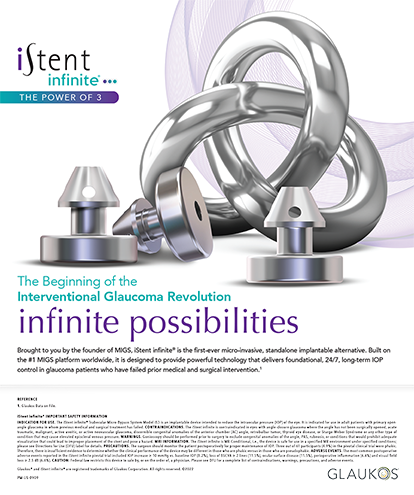
John P. Berdahl, MD
"My little corner of the world in South Dakota has one of the lowest unemployment rates in the United States. The state has had an unemployment rate of less than 4% for my entire career, perhaps with a minor exception during the second quarter of 2020 due to the COVID-19 pandemic. Recruiting and retaining good talent has therefore been a priority at our practice for many years, and it will continue to be one given the predicted shortage of ophthalmologists. The secret sauce, if you will, of the practice is not the surgeons or optometrists but the connections between staff members and patients. Whether it’s the moment when patients contact our first impressions team by phone or when they receive staff assistance while struggling with a bill, it’s the team that touches patients deeply in their moments of vulnerability.
The first rule of running an ophthalmology practice given the current staffing challenges and predicted shortage of ophthalmologists is to avoid a staff shortage altogether. Caring for staff is a priority at our practice. First, there are the tangibles such as stocking a staff vending machine with free healthy snacks and drinks. We also offer a new shoe allowance that is disbursed every year on the anniversary of an employee’s start date, host monthly get-togethers that usually include the staff’s families, and offer competitive salaries. The intangibles of caring for our staff, however, are often more important. These include simply being nice to the team, providing clear directions, and ensuring that they know how to get decisions made and which decisions they can make themselves.
Simple strategies such as those described here can help make staff feel valued, create a work culture that makes Mondays enjoyable, and build a practice’s reputation in the community as an excellent place to work. Ultimately, these strategies could lessen the impact of the predicted shortage of ophthalmologists as well. Once that reputation is established, staff shortages of any kind become less likely and less burdensome because it becomes easier to hire new staff members.”
- Clinician and researcher, Vance Thompson Vision, Sioux Falls, South Dakota
- jberdahl@vancethompsonvision.com

O. Bennett Walton IV, MD, MBA
"There are hours of pre- and postoperative visits for every surgical patient interaction. As demands on surgeons’ time continue to grow with demographic shifts and given the predicted shortage of ophthalmologists, the ability to practice with a team who can handle routine pre- and postoperative care becomes a significant advantage. One thing I love about our practice is the collaborative way in which we work. I get the privilege of working with our practice’s incredible optometrists, who are experts in pre- and postoperative cataract and refractive care, dry eye management, and complex contact lens fittings. It makes the clinic environment enjoyably interactive among friends while allowing each of us to focus on our preferred skill sets.”
- Founder and cataract, LASIK, cornea, and glaucoma surgeon, www.bennettwaltonvision.com, Houston
- Member, CRST Editorial Advisory Board
- BennettWaltonVision@gmail.com

Dagny C. Zhu, MD
"In today’s rapidly advancing technological age, fewer ophthalmologists means not only seeing more patients but also seeing more patients with higher expectations. To meet this demand, ophthalmologists must deliver greater efficiency and a higher quality of care. One way to achieve this is by offering in-office surgery.
I have operated out of an office-based surgery suite for almost 5 years. Instead of scheduling a few patients once a week in a busy ambulatory surgery center or hospital system, I can offer surgery to my patients 5 days a week, including Saturdays. This gives patients greater flexibility with their work schedules and allows me to provide surgical care to more patients. The OR turnover time in an office-based setting is also shorter, in my experience, which contributes to greater efficiency.
Additionally, I often perform immediately sequential bilateral cataract surgery (ISBCS), which increases efficiency by reducing the number of surgical and postoperative visits. Several studies have established the safety of ISBCS and have demonstrated similar safety and refractive outcomes but higher levels of patient satisfaction and lower cost with ISBCS.1,2 Patients can also achieve more rapid visual rehabilitation and neural adaptation with ISBCS.
Finally, my cataract surgery patients receive oral sedation with midazolam, ketamine, and ondansetron (MKO Melt, ImprimisRx) rather than intravenous sedation. The onset of sedation is rapid (approximately 15–20 minutes) with a slow, steady release, and I find this approach gives my patients greater comfort and peace of mind because no needles or strict fasting is required.
Office-based surgery enhances both my efficiency and the patient experience. I believe it is the future of cataract surgery, especially given the predicted shortage of ophthalmologists.”
1. Carolan JA, Amsden LB, Lin A. Patient experience and satisfaction with immediate sequential and delayed sequential bilateral cataract surgery. Am J Ophthalmol. 2022;235:241-248.
2. Dickman MM, Spekreijse LS, Winkens B. Immediate sequential bilateral surgery versus delayed sequential bilateral surgery for cataracts. Cochrane Database Syst Rev. 2022;4(4):CD013270.
- Cornea, cataract, and refractive surgeon; Medical Director; and Partner, NVISION Eye Centers, Rowland Heights, California
- dagny.zhu@gmail.com; Instagram @DZEyeMD and Twitter @DZEyeMD




